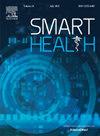A non-immersive virtual reality serious game to assess distractor inhibition and spatial attention in post-stroke individuals
Q2 Health Professions
引用次数: 0
Abstract
Background
REAsmash, a non-immersive virtual reality serious game based on Feature Integration Theory (FIT) was used to evaluate distractor inhibition and spatial attention.
Methods
Participants (15 post-stroke and 15 age matched healthy controls) performed the visual search REAsmash task with manipulations of high and low target-distractor salience and distractor number. Dependent variables included frequency of errors and omissions and mean correct response time.
Results
Post-stroke participants made more errors (χ2(1) = 19.452, p < 0.001) and omissions (χ2(1) = 55.108, p < 0.001), and responded slower (F(1,28) = 17.957, p < 0.001, η2 = 0.391) than controls. FIT significant effects showed salience (F(1,28) = 497.626, p < 0.001, η2 = 0.947), distractor number (F(2,56) = 24.968, p < 0.001, η2 = 0.471), and a salience and distractor number interaction (F(2,56) = 26.616, p < 0.001, η2 = 0.487), with increased distractor number slowing response time in the low salience condition. A salience-by-group interaction (F(1,28) = 7.794, p = 0.009, η2 = 0.218) indicated greater post-stroke difficulties in low salience conditions. A target-hand congruency (Simon) effect was observed only in post-stroke participants (F(1,28) = 4.499, p = 0.043, η2 = 0.138).
Conclusion
REAsmash-niVR replicated FIT results, confirming its validity for assessing distractor inhibition and spatial attention in post-stroke populations. Future research will compare individuals with and without visual neglect and explore rehabilitation applications to improve spatial attention and motor responses.
一个非沉浸式虚拟现实严肃游戏来评估中风后个体的分心物抑制和空间注意力
采用基于特征集成理论(FIT)的非沉浸式虚拟现实严肃游戏《ashmash》评估分心物抑制和空间注意。方法15名脑卒中后患者和15名年龄匹配的健康对照,采用高、低目标分心物显著性和分心物数量操作进行视觉搜索重组任务。因变量包括错误和遗漏的频率以及平均正确响应时间。结果卒中后参与者的错误发生率较高(χ2(1) = 19.452, p <;0.001)和遗漏(χ2(1) = 55.108, p <;0.001),且反应较慢(F(1,28) = 17.957, p <;0.001, η2 = 0.391)。FIT显著效应显著(F(1,28) = 497.626, p <;0.001、η2 = 0.947),错误选择号码(F (56) = 24.968, p & lt;0.001, η2 = 0.471),显著性和干扰数相互作用(F(2,56) = 26.616, p <;0.001, η2 = 0.487),在低显著性条件下,随着分心物数量的增加,反应时间减慢。显著性组间相互作用(F(1,28) = 7.794, p = 0.009, η2 = 0.218)表明低显著性组卒中后困难更大。靶手一致性(Simon)效应仅在卒中后参与者中观察到(F(1,28) = 4.499, p = 0.043, η2 = 0.138)。结论remashash - nivr重复了FIT结果,证实了其在评估卒中后人群分心物抑制和空间注意方面的有效性。未来的研究将比较有和没有视觉忽视的个体,并探索康复应用来提高空间注意力和运动反应。
本文章由计算机程序翻译,如有差异,请以英文原文为准。
求助全文
约1分钟内获得全文
求助全文

 求助内容:
求助内容: 应助结果提醒方式:
应助结果提醒方式:


